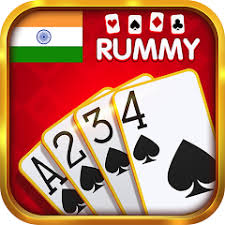Indian Rummy 13 Cards is a popular variant of rummy played with two decks of cards, including jokers. The game is typically played by 2 to 6 players, where the objective is to form valid sets and sequences using the cards dealt to each player. The first player to declare a valid hand wins the game.
How to Play Indian Rummy 13 Cards
Objective
The primary goal of Indian Rummy 13 Cards is to form a valid hand comprising at least two sequences, one of which must be a pure sequence (without a joker). A player wins by melding their cards into valid sets and sequences.
Card Setup
- Deck: Two standard decks of 52 cards, including jokers.
- Players: 2 to 6 players.
Game Rules
- Dealing Cards: Each player is dealt 13 cards. The remaining cards form the draw pile, with the top card placed face-up to start the discard pile.
- Gameplay:
- Players take turns picking a card from either the draw pile or the discard pile.
- After picking a card, players must discard one card to the discard pile.
- The game continues until a player forms a valid hand and declares.
- Forming Sets and Sequences:
- Set: A group of three or four cards of the same rank (e.g., 7♠, 7♥, 7♦).
- Sequence: A group of three or more consecutive cards of the same suit (e.g., 4♣, 5♣, 6♣).
- Pure Sequence: A sequence without the use of jokers.
- Declaring a Win: To declare, a player must show their valid sets and sequences to the other players. If valid, the player wins the round.
- Scoring: Points are calculated based on the cards remaining in the opponents’ hands. The objective is to minimize the points you have left.
Strategy Tips for Winning
- Observe Opponents: Pay attention to the cards your opponents are picking and discarding. This can provide insights into their strategies and what they may be trying to form.
- Form Pure Sequences Early: Prioritize forming a pure sequence, as it is a requirement for declaring. This gives you a solid foundation for the rest of your hand.
- Manage High-Value Cards: High-value cards (like Aces and face cards) can be risky if you don’t meld them into sets or sequences. Aim to get rid of them if they’re not useful.
- Use Jokers Wisely: Jokers can help complete sets or sequences, but avoid relying solely on them for a pure sequence.
- Stay Flexible: Be ready to adapt your strategy based on the cards you draw and the moves of your opponents.
The Appeal of Indian Rummy 13 Cards
- Social Interaction: The game is often played in groups, making it a social activity that fosters interaction among friends and family.
- Skill Development: Indian Rummy encourages strategic thinking, quick decision-making, and mental agility, making it both a fun and intellectually stimulating game.
- Accessibility: The game can be played in various settings—at home, in cafes, or online—making it widely accessible.
Conclusion
Indian Rummy 13 Cards is more than just a game of chance; it’s a captivating blend of strategy, skill, and social interaction. Whether you’re playing for fun or competing for cash prizes online, the thrill of forming the perfect hand keeps players coming back for more. So gather your friends, shuffle the decks, and enjoy an exciting game of Indian Rummy 13 Cards.




